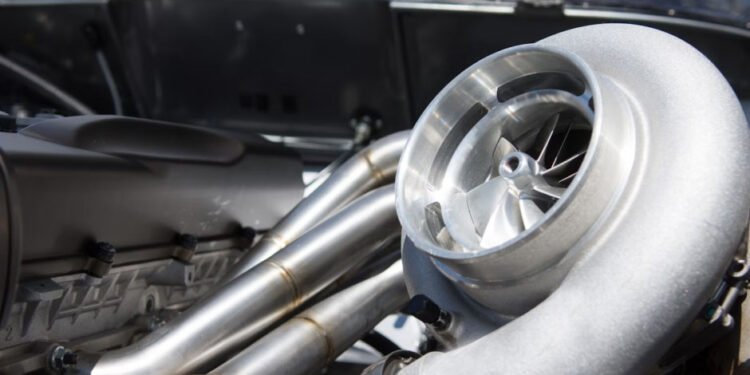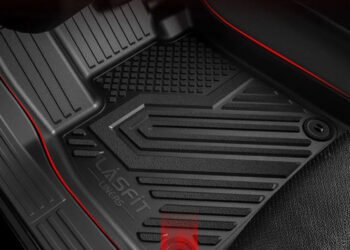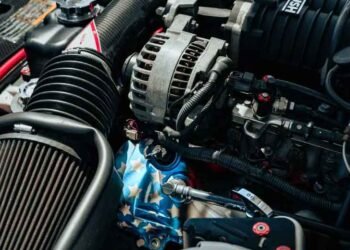The cooling system in a vehicle is critical for maintaining optimal engine temperatures and preventing overheating. In Duramax-equipped cars, the turbo coolant hoses are a key component of this system, providing a conduit for coolant to transfer heat away from the engine and turbocharger. Over time, signs of wear and tear can manifest in these hoses, indicating a need for inspection or replacement to maintain the cooling system’s integrity. Common symptoms include visible cracks, leaks, or a bulging hose indicating a compromised structure, leading to decreased coolant flow and potential engine overheating.
As the Duramax turbo coolant hose ages, it is exposed to extreme temperatures, pressure fluctuations, and chemical reactions within the cooling system, which can cause the material to deteriorate. When the hose’s condition is compromised, it can affect the overall cooling efficiency of the engine, leading to increased temperatures and the risk of damage to the turbocharger and other engine components. Regular maintenance and early wear detection can prevent costly repairs and extend the lifespan of the cooling system components.
Key Takeaways
- Visible hose damage affects cooling efficiency.
- Compromised hoses can lead to engine damage.
- Regular maintenance extends system life.
Identifying Wear and Tear in Duramax Turbo Coolant Hoses
Recognizing the early signs of wear and tear in turbo coolant hoses ensures a Duramax engine’s longevity and effective performance. An accurate diagnosis can prevent coolant leaks, leading to overheating and serious engine damage.
Visual Inspection and Physical Signs
The first step should be a diligent visual inspection of the Duramax turbo coolant hoses. Look for obvious cracks or brittleness in the rubber hose, which usually indicate aging and exposure to high temperatures. Additionally, soft spots or bulges suggest internal damage and weakening of the hose structure, often a precursor to leaks.
- Look for:
- Cracks or splits in the hose surface.
- Bulging or swollen areas.
Symptoms of Coolant Hose Degradation
Leaks are the most common symptom indicating a problem with coolant hoses. When a Duramax coolant hose begins to degrade, it may result in a detectable coolant leak, often accompanied by the sweet smell of coolant. Puddles or drips beneath the vehicle are clear indicators. Overheating can occur if the issue is not promptly addressed, as the engine temperature rises when coolant levels drop. In severe cases, white smoke emanating from the engine compartment may occur due to coolant burning on hot engine parts.
- Symptoms include:
- Sweet-smelling liquid beneath the vehicle.
- Rising engine temperature gauge.
- White smoke from the engine area.
Impact of Faulty Hoses on Cooling Efficiency
A compromised coolant hose impairs the cooling efficiency of a Duramax engine since proper circulation of coolant is critical to maintaining optimal engine temperature. Continuous exposure to heat and high temperatures degrades hoses, leading to loss of coolant and reduced cooling capability. This can quickly escalate to engine overheating, a serious condition resulting in engine failure. Therefore, regular inspection and maintenance of coolant hoses are crucial in preventing such detrimental outcomes.
- Impacts include:
- Reduced ability to maintain engine temperature.
- Elevated risk of engine overheating and potential failure.
Maintenance and Prevention Strategies
Effective maintenance and prevention strategies are crucial for ensuring a Duramax turbo coolant hose’s reliability, durability, and longevity. These strategies can mitigate common wear and tear issues and enhance overall performance.
Routine Inspection and Replacement
Regular inspection of the coolant hoses is essential. Duramax vehicles should have their hoses checked for visible cracks, swelling, or leaks that can indicate impending failure. These elements are key signs of wear and underline the necessity for timely repair or replacement. It is recommended to inspect hoses every oil change and replace them as per the manufacturer’s guidelines or sooner if signs of wear are evident.
Upgrading Hoses and Clamps
For added reliability and performance, owners may consider upgrading to high-quality Duramax turbo coolant hose kits that can better withstand the high-temperature environment of turbocharged engines. In addition, ensuring clamps are tight and undamaged is critical. Using bolts with the correct torque specifications can prevent unnecessary stress on the hose connections.
Cooling System Maintenance Tips
Comprehensive cooling system maintenance includes regular flushing and filling of the coolant, checking and replacing the water pump and thermostats as needed. Proper lubrication of moving parts is a preventive measure for ensuring the coolant return line is unobstructed. Attention to these maintenance tips can help avoid overheating and maintain optimal engine performance.
Conclusion
Regular inspection and prompt replacement of a Duramax turbo coolant hose are essential for the health of the cooling system. Signs of wear, such as cracks, leaks, and visible damage, compromise the hose’s capacity, leading to poor cooling and potential engine overheating. Timely maintenance ensures optimal engine performance and longevity, keeping the Duramax engine running efficiently. One must remain vigilant for these common indicators to prevent more serious damage to the vehicle’s engine.












